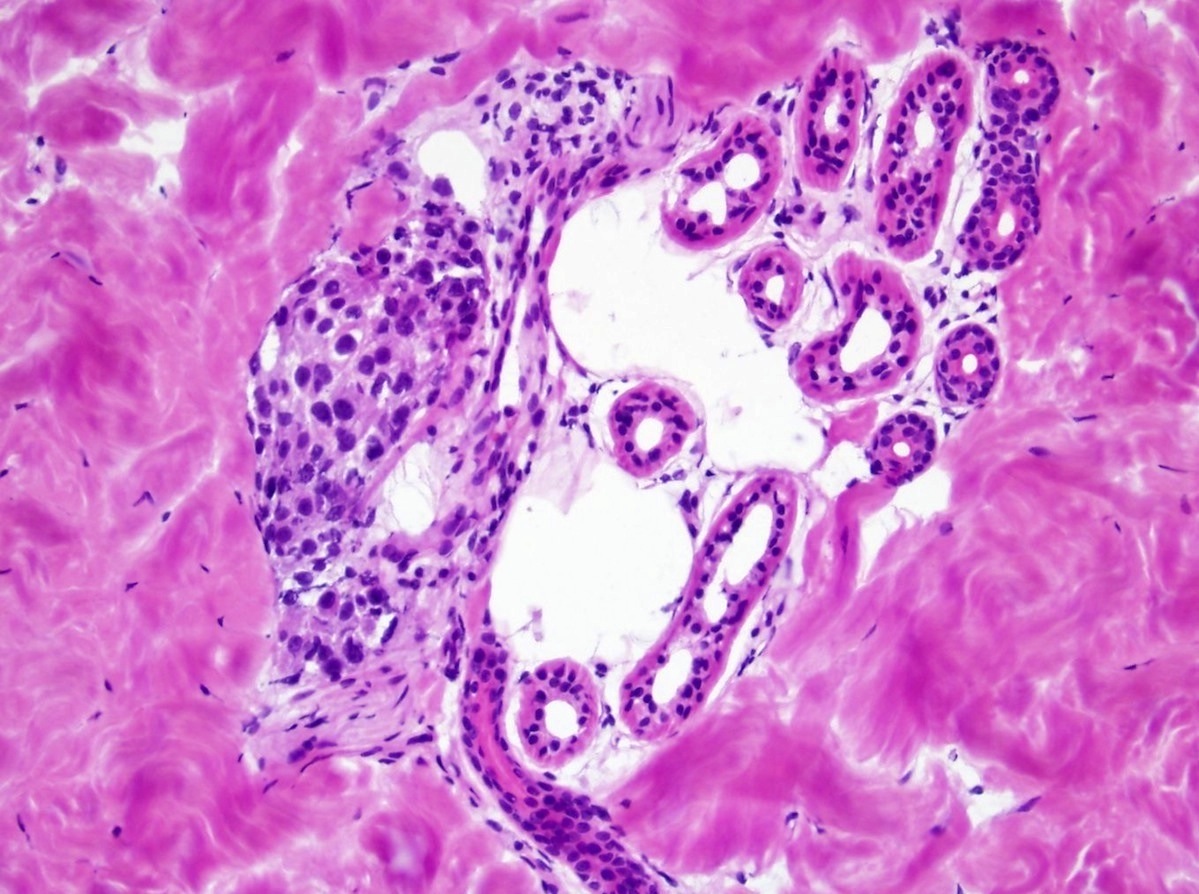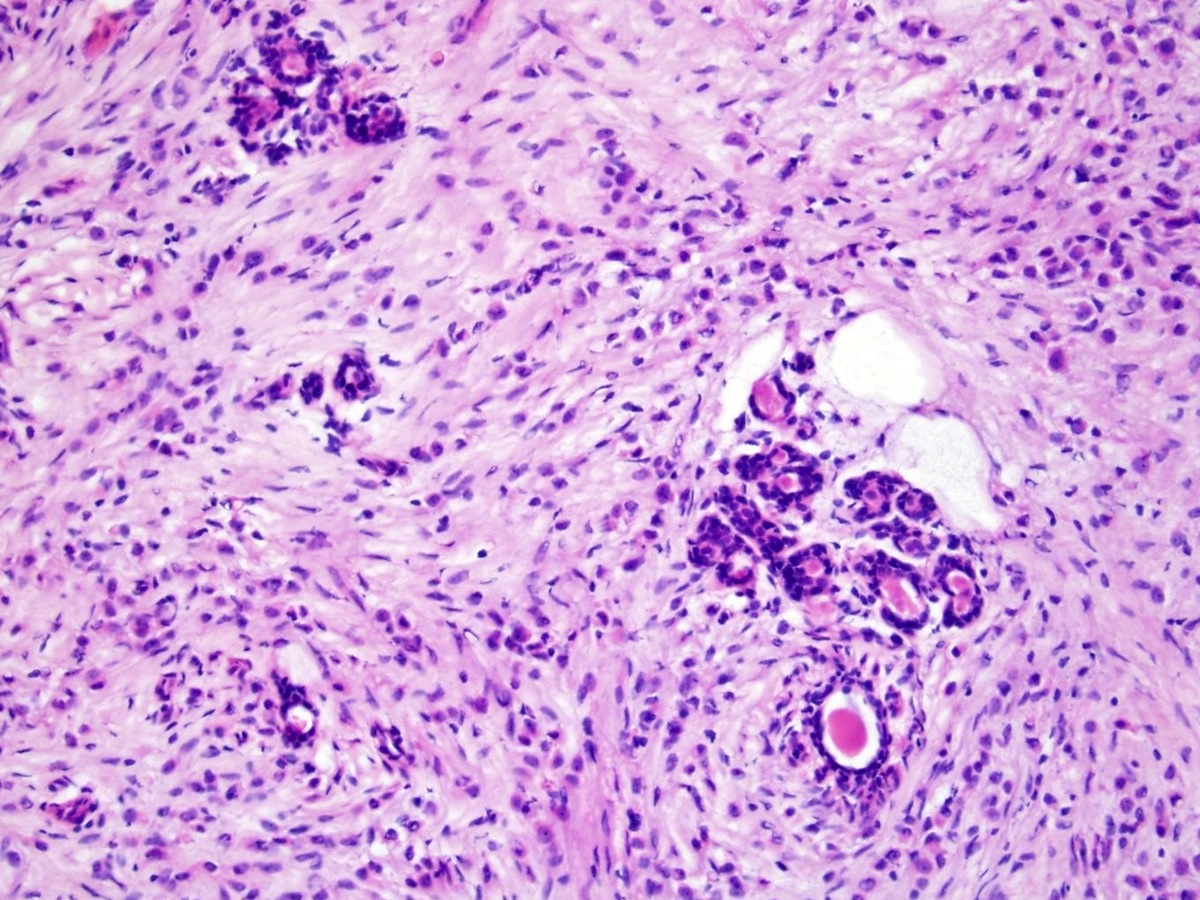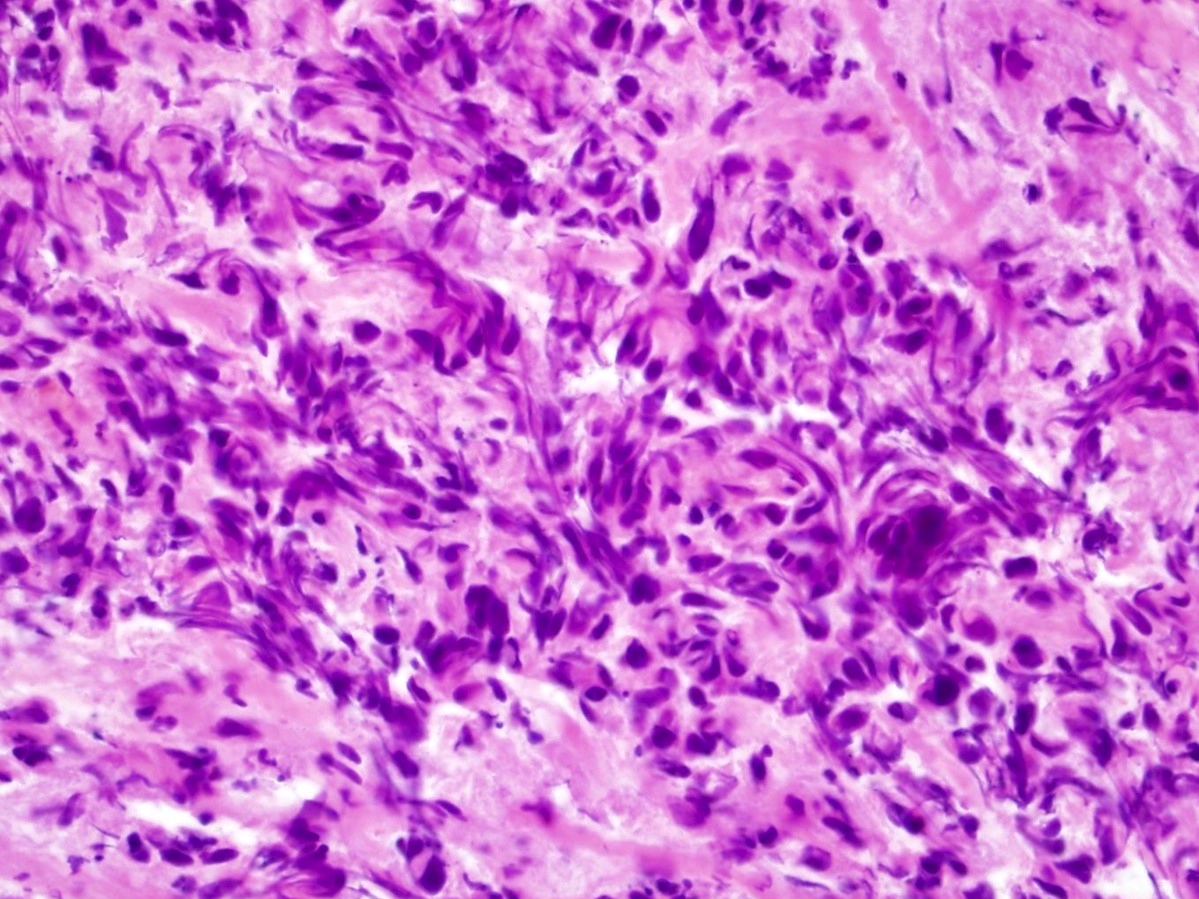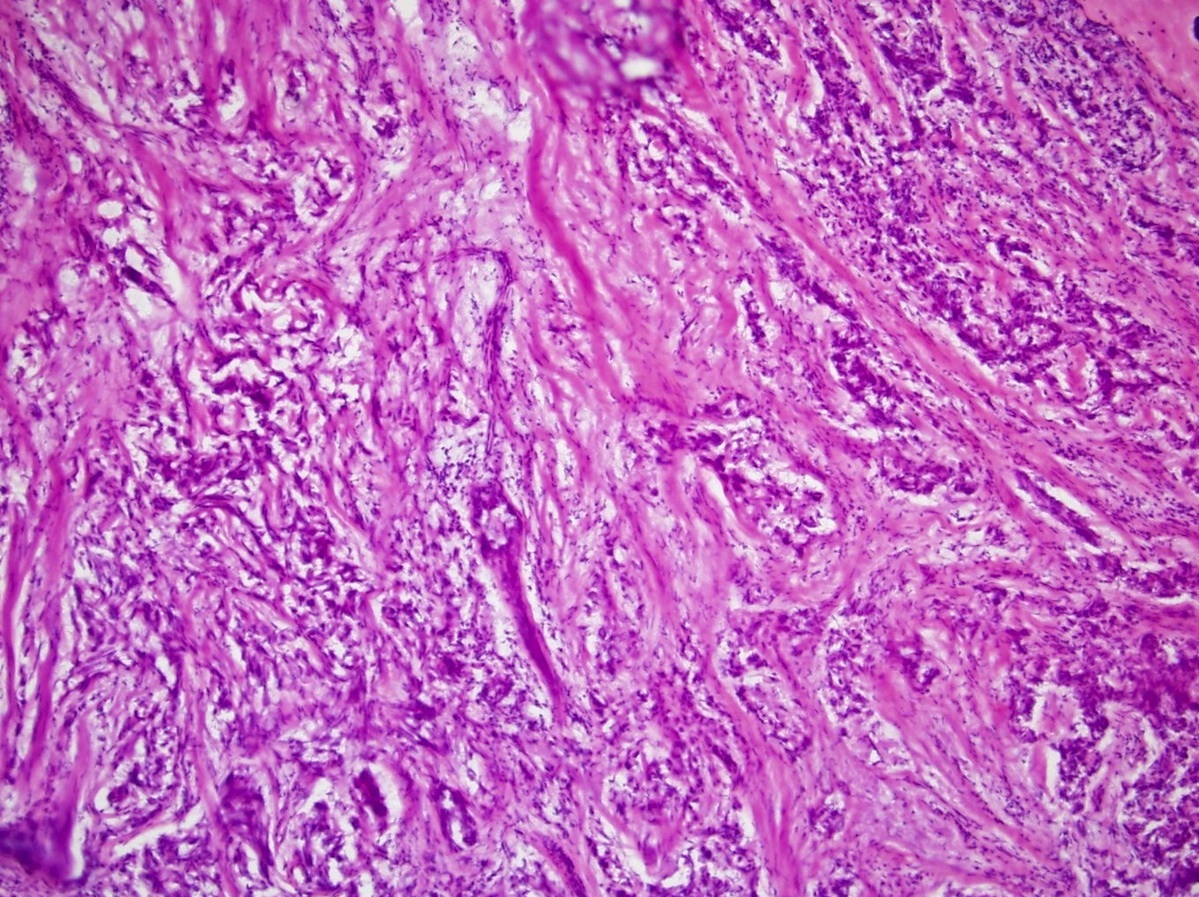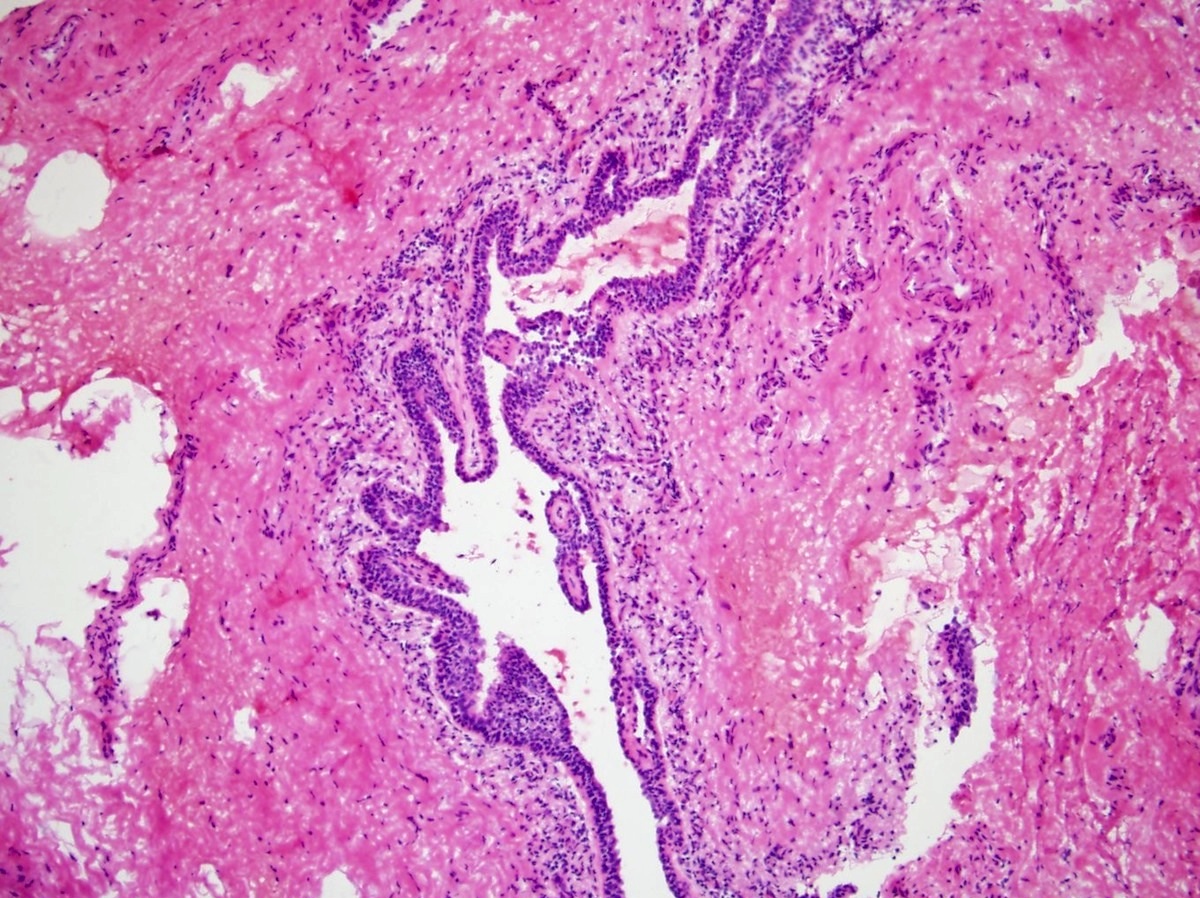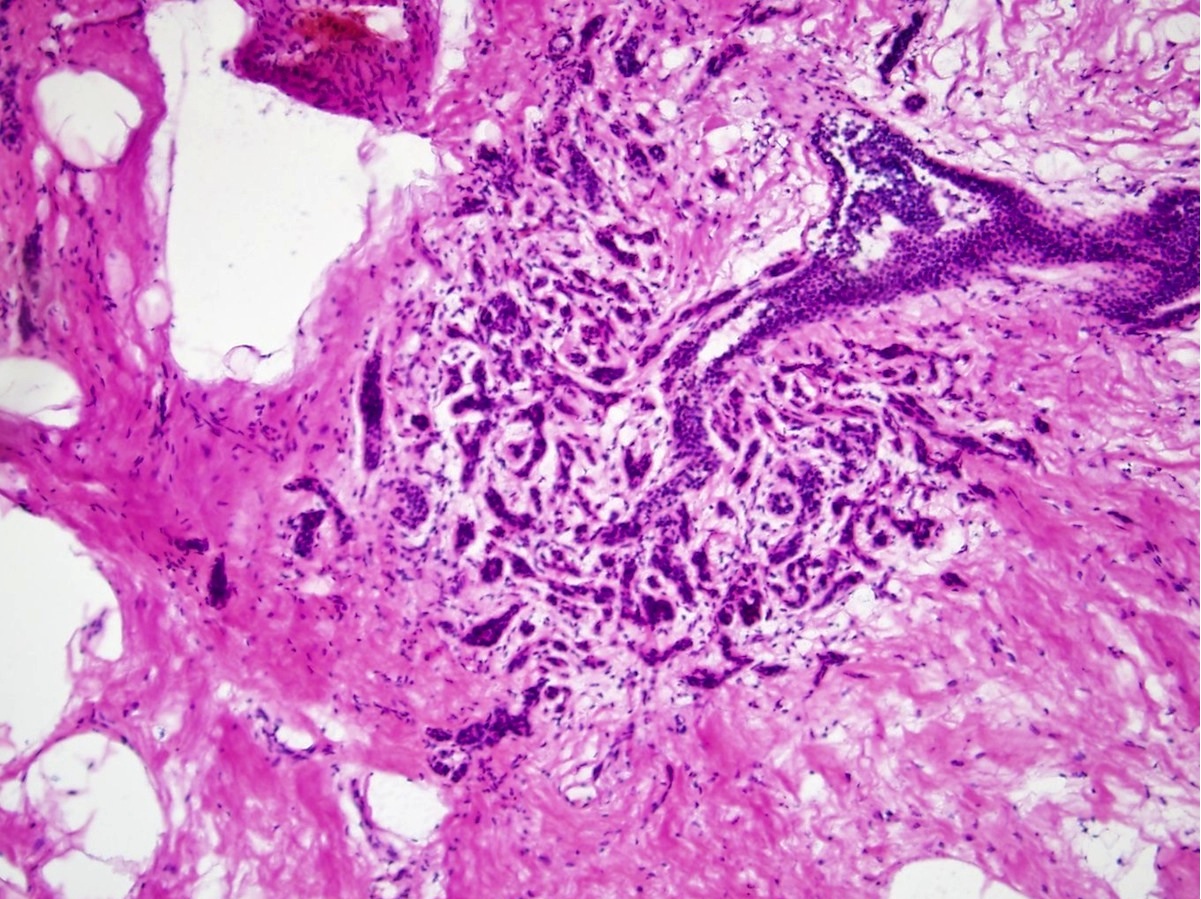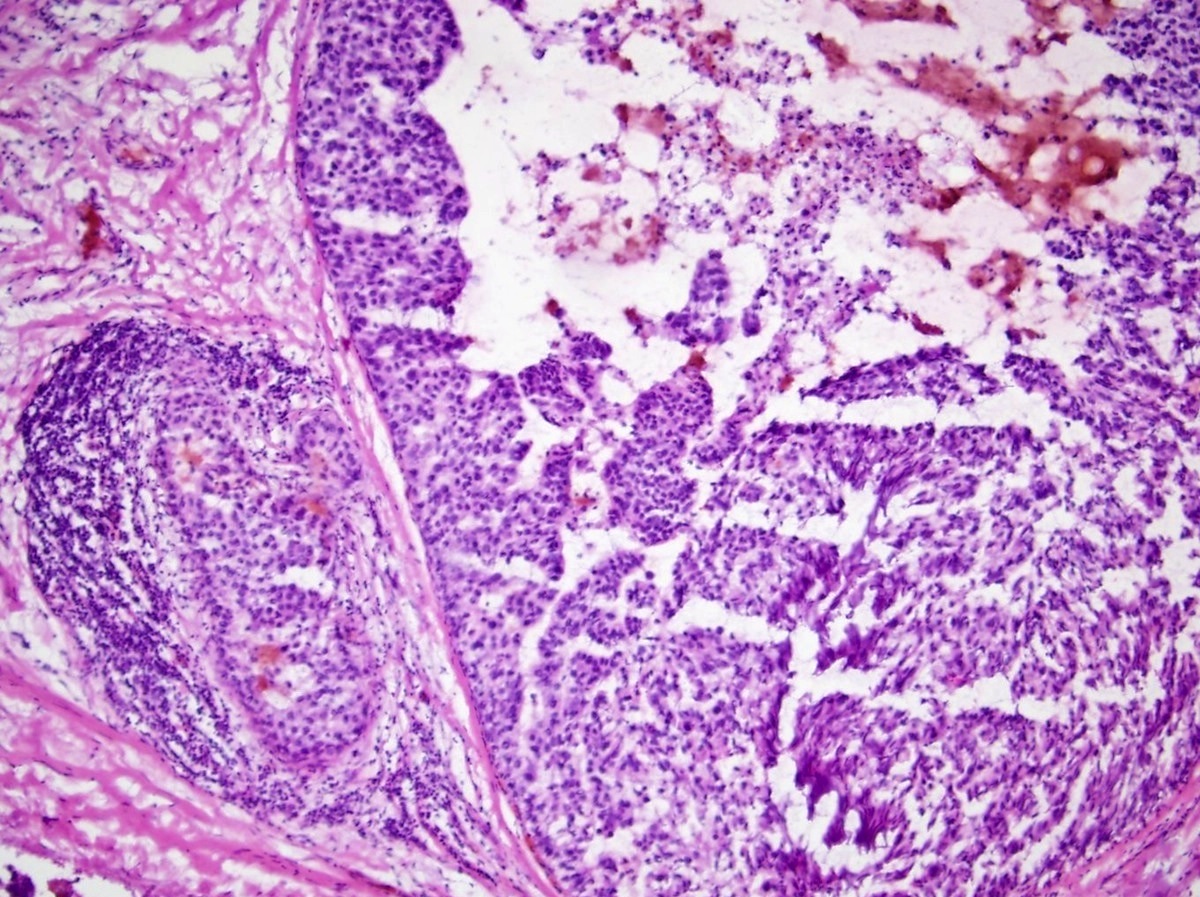Table of Contents
Definition / general | Essential features | Clinical features | Microscopic (histologic) description | Microscopic (histologic) images | Differential diagnosis | Additional references | Practice question #1 | Practice answer #1Cite this page: Reisenbichler ES. Frozen sections. PathologyOutlines.com website. https://www.pathologyoutlines.com/topic/breastmalignantfrozensections.html. Accessed August 28th, 2025.
Definition / general
- Click here for the frozen section procedure topic
- Historically used for incisional biopsies for primary diagnosis in the breast (Pathologica 2011;103:325); now core biopsy is utilized
- Currently used most frequently for axillary sentinel lymph node evaluation to determine need for further axillary dissection (Breast 2017;34:S64) and to evaluate nipple margins in nipple sparing mastectomies (Breast J 2016;22:18)
- Select institutions utilize intraoperative margin assessment by frozen section for breast conserving surgery (Ann Surg Oncol 2017 Jan 5 [Epub ahead of print])
Essential features
- Frozen section introduces histologic artifacts: (a) alteration of architectural features makes benign lesions such as sclerosing adenosis more closely mimic invasive carcinoma; (b) artifactual clefting / spaces around tumor cells simulates lymphovascular invasion (Arch Pathol Lab Med 2005;129:1565)
- Use of frozen section for sentinel lymph node assessment has declined following American College of Surgeons Oncology Group Z0011 trial findings (Arch Pathol Lab Med 2016;140:830, Am J Clin Pathol 2016;146:57)
- Frozen section has been shown to be highly sensitive (86%) and specific (96%) in a meta-analysis of intraoperative breast margin assessment (Ann Surg 2017;265:300)
- Frozen section use should be considered for margin assessment if reoperation rates at an institution are > 15% (Ann Surg Oncol 2017 Jan 5 [Epub ahead of print])
Clinical features
- Use of frozen section to intraoperatively assess breast margins has reduced reoperative rates at selected institutions by 12.3% (Eur J Surg Oncol 2017;43:1273)
- Frozen section use on margins for invasive lobular carcinomas or for those with extensively close margins may not significantly lower subsequent breast operations (Eur J Surg Oncol 2017;43:1273)
- Frozen assessment of margins for DCIS has shown mixed results in the effect on reoperative rates (Breast Cancer (Auckl) 2016;10:205, Ann Surg Oncol 2016;23:2788)
- Frozen section of lumpectomy margins offers potential cost saving to patients and payers (Oncol Pract 2016;12:e413)
- Frozen section assessment of nipple margins for nipple sparing mastectomy is highly specific but only moderately sensitive for the detection of carcinoma in subareolar tissue, allowing nipple resection at the time of mastectomy (Breast J 2016;22:18)
Microscopic (histologic) description
- Diagnostic errors in frozen section of breast tissue include sampling errors or proliferative lesions mimicking in situ (usual ductal hyperplasia, papilloma) and invasive carcinoma (sclerosing adenosis) (Tumori 1999;85:15)
Microscopic (histologic) images
Differential diagnosis
- Cautery and frozen artifact may cause sclerosing lesions to more closely mimic invasive carcinoma, and usual ductal hyperplasia (UDH) to mimic atypical proliferations such as atypical ductal hyperplasia (ADH), ductal carcinoma in situ/DCIS or lobular carcinoma in situ (LCIS)
- Histiocytes in frozen section of sentinel lymph nodes may mimic metastatic carcinoma (Int J Surg Pathol 2009;17:262)
- Lymphocytic infiltration can mimic invasive lobular carcinoma; a linear growth pattern or a touch preparation of the area to more closely evaluate cytologic features such as intracytoplasmic mucin droplets supports a diagnosis of lobular carcinoma
- Papillomas may mimic ductal carcinoma in situ (DCIS)
Additional references
Practice question #1
- Which of the following is not currently a typical use of intraoperative frozen section in breast cancer surgical management?
- Axillary sentinel lymph node evaluation.
- Breast margin evaluation in breast conserving surgery.
- Nipple margin evaluation in nipple sparing mastectomy.
- Primary diagnosis of a breast mass for same day surgical management.
Practice answer #1
D. Primary diagnosis of a breast mass for same day surgical management.
In the past, breast carcinoma could be diagnosed intraoperatively, allowing surgical management to take place at the time of the primary biopsy. In the current age of neoadjuvant therapy, testing breast carcinomas for estrogen / progesterone receptor and HER2 status prior to definitive surgical management is the standard of care.
Comment Here
Reference: Frozen sections
In the past, breast carcinoma could be diagnosed intraoperatively, allowing surgical management to take place at the time of the primary biopsy. In the current age of neoadjuvant therapy, testing breast carcinomas for estrogen / progesterone receptor and HER2 status prior to definitive surgical management is the standard of care.
Comment Here
Reference: Frozen sections


